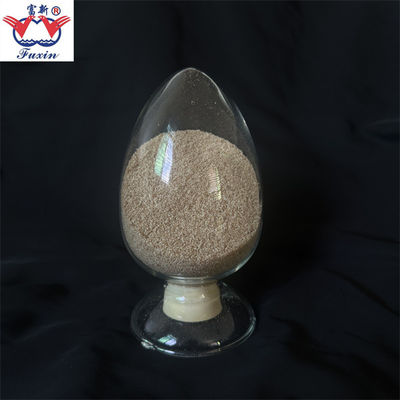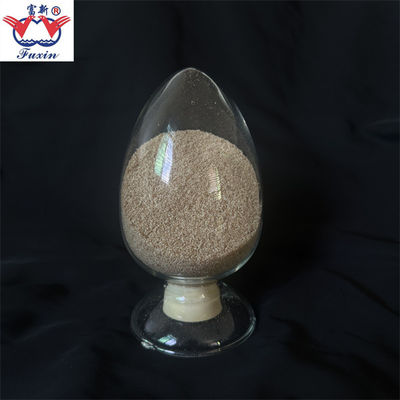The Sodium Alginate Substitute High-Performance Reactive Printing Thickener Thickener
Product Description:
"The Sodium Alginate Substitute"
Uncover a groundbreaking alternative to sodium alginate in textile printing with our Carboxymethyl Cellulose (CMC) Reactive Printing Thickener. The key to its success lies in its Degree of Substitution (DS), which determines its suitability for different applications. High DS
CMC is the star of the show, proven to outperform sodium alginate in reactive dye printing. Experiments have conclusively demonstrated that CMC with an ultra-high DS exceeding 2.0 can fully replace sodium alginate, making it the preferred choice for environmentally-conscious textile printers.
This sodium alginate substitute is a game-changer, reducing environmental impact while delivering outstanding results. Embrace the future of textile printing with CMC-based solutions that offer unparalleled performance and eco-friendliness.
Features:
Sodium carboxymethyl cellulose aqueous solution is a great product to use in textile production. It is clear, transparent and homogenous with favorable stability that won't be affected by mechanical force. It is also easy to store in the size tank, and can be used at any time without worrying about the temperature or bacteria. With its viscidity and film-forming property, it can form smooth, wear-resistant and flexible film on the surface of warp, bear the absolute strength, relative activity and friction of weaving machine.
Yarns that are processed with this solution come out dry and glossy, with a soft hand feel. Desizing is also very convenient without needing chemical treatment or the consumption of desizing agents. Furthermore, the yarn count and fabric processed with this solution won't get yellowing or mildewed, avoiding damages by worms or rats.
Using sodium carboxymethyl cellulose aqueous solution has one major benefit which is that it simplifies the requirements compared to when using starch as the size. It also helps to improve the sanitary condition of workshop, making the maintenance of mechanical equipment more convenient, and enhance the production capacity of weaving machine.
Technical Parameters:
Performance of Ultra High DS CMC


1st pic:Dyed color granular CMC 2% solution
2nd pic: The left is standard product made in Italy. The middle and right are Fuxin different types of CMC.
Specification
| TYPE |
Degree of Substitution (DS) |
Viscosity
(Brookfield,1%soln.,20℃)
|
pH |
Moisture |
Particle Size |
| 10H |
1 |
2500-3000cps |
6.5-8.5 |
≤15% |
20-70 mesh |
| 13H |
1.3 |
1500-2500cps |
| 15H |
1.5 |
1000-2000cps |
| 18H |
1.8 |
800-1600cps |
| Y002 |
2 |
800-1500cps |
| Y230 |
2.3 |
600-1000cps |
*Kindly contact us for specification and information about any specific grade of CMC other than mentioned in the above table.
Powder or granular available, we recomed customer to purchase the brown granle type CMC to sell as sodium alginate for higher profit.
Technique Process
▲Dissolve the dyes and add into the paste, make the color paste with thickener→▲Printing→▲Drying (100 ℃)→▲Baking or steaming→▲Washing→▲Soaping→▲Rinsing→▲Post treatment procedure.
Dissolution Methods and Proportion:
How to make the paste?
1. The ratio depends on DS level, low DS product should mix with pure sodium alginate to reach a better performance, while ultra high DS product can 100% replace SA.
2. Proportion: same as sodium alginate original paste preparing. Firstly add 65% water, stir the water while adding the product evenly and slowly, then speed up the stirrer for 20-25 minutes. And then add the remaining 35% water, stir for another 20-30 minutes. Leave for 15 minutes.
How to make sure the paste dissove completely?
1. Powder and water completely fuse, not exist solid-liquid separation phenomenon.
2. Paste is dissolved evenly, the surface is smooth, no granular objects.
Applications:
Textile Printing: Reactive Printing Thickener is extensively used in textile printing, particularly for reactive dye-based printing methods. It is employed to thicken the printing paste, allowing for precise and controlled application of dyes onto fabrics. The thickener enhances the viscosity and rheological properties of the paste, ensuring sharp and well-defined printed designs.
Fabric Decoration: Reactive Printing Thickener plays a crucial role in fabric decoration by enabling the creation of vibrant and intricate patterns. It facilitates the bonding of reactive dyes with fabric fibers, resulting in excellent color fastness and resistance to fading. This makes it suitable for a wide range of fabric types, including cotton, rayon, silk, and blends.
Apparel Manufacturing: Reactive Printing Thickener is widely used in the production of printed textiles for apparel manufacturing. It allows for the creation of unique and visually appealing designs on garments, such as t-shirts, dresses, and scarves. The thickener ensures consistent and uniform printing results, enhancing the overall quality and aesthetic appeal of the finished products.
Support and Services:
Reactive Printing Thickener Technical Support and Service
- Provide professional technical support and service to customers.
- Provide timely technical support and training.
- Provide technical advice on product selection and usage.
- Provide technical assistance in trouble shooting.
- Provide technical support for product certification.
- Provide technical support for product quality control.
- Provide technical support for product improvement.
- Provide technical support for product customization.
Packing and Shipping:
Reactive Printing Thickener is packaged and shipped in a secure container, sealed with a moisture-resistant seal. The container should be kept in a cool, dry place away from direct sunlight and extreme temperatures. It should also be handled with care as it is a sensitive product. The product should be shipped with protective measures to ensure it does not experience any physical damage during transit.

 Your message must be between 20-3,000 characters!
Your message must be between 20-3,000 characters! Please check your E-mail!
Please check your E-mail!  Your message must be between 20-3,000 characters!
Your message must be between 20-3,000 characters! Please check your E-mail!
Please check your E-mail! 



